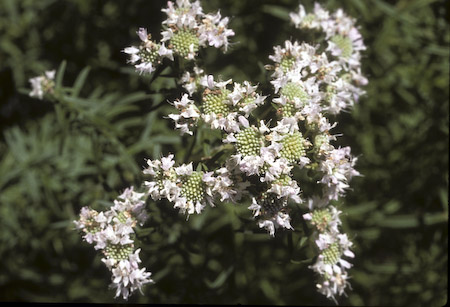

muticum Family: Lamiaceae Zone: 3/4-7/8 depending on species. Other cultivars and species: Several species can be used including P. Pycnanthemum tenuifolium Common name: Mountain mint. To collect the most pycanthemum virginianum seeds, repeat the process daily until all the seed has matured. Species and cultivars you need to learn for class: Pycnanthemum sp. Seed Saving: When the flower spikes begin to dry and turn color, shake the entire plant's seed heads over a container to remove the seed. Choose stems that are just beginning to bloom, cutting them in the morning before the dew has dried. Harvesting: This plant can be harvested for both fresh and dried use. The research is aimed at determining the qualitative and quantitative content of essential oils in the aerial part. This plant is extremely attractive to bees, and is a valuable nectar plant it also grows well in containers. californicum (Lamiaceae) Plants Abstract Aim. It can spread vigorously by rhizomes once established, though it does not usually reseed. This plant also grows well in rocky or clay soil. Mature plants tolerate drought well and flourish in fairly dry soil, though they will benefit from occasional watering in dry weather.
#Pycnanthemum virginianum free#
To obtain a free copy of this guidebook, telephone (651) 297-8679 or write to Operations and Environmental Review Section, Regional. Funding support: National Fish and Wildlife Foundation, Lynn and Thelma MacCready Forest and Wildlife Endowment, MSU, and Hanes Trust of the Michigan Botani-cal Club. The tables and content on this page have been adapted from Plants for Stormwater Design: Species Selection for the Upper Midwest (Daniel Shaw and Rusty Schmidt, Minnesota Pollution Control Agency, 2003). Growing: Water seedlings regularly until they become established, and control weeds. Developed by: Doug Landis and Anna Fiedler, MSU Department of Entomology. Fens, prairies, marshes, sedge meadows, tamarack swamps, swales, depressions such as old lakebeds fields, sandy banks less often in forested areas. Keep seedlings lightly moist, and transplant them as soon as they have developed several leaves. Pycnanthemum virginianum, the Virginia or common mountain-mint, is a plant in the mint family, Lamiaceae.

If starting mountain mint seeds indoors, keep in mind that the best temperature for germination is 70 degrees F. Keep the soil lightly moist until germination. Specific epithet comes from the Latin word muticus meaning blunt.Sowing: Direct sow in early spring as soon as the soil has warmed, pressing into the surface of the soil surface since this plant needs light to germinate. Habitat: Edges of marshes, fields, thickets, and railroad edges in wet to dry soils. It is in flower from August to September.

Species: Pycnanthemum virginianum (L.) Durieu & Jacks. Pycnanthemum virginianum is a PERENNIAL growing to 1 m (3ft 3in). Genus name comes from Greek pyknos meaning dense and anthos meaning flower for its densely packed flowers. View county names by placing the mouse cursor over a particular county. Native Americans used this plant for treatment of fevers, colds, stomach aches, and other minor physical ailments. Flowers are attractive to butterflies and bees. When planted in groups or massed, the silvery bracts give the entire planting the appearance of being dusted by a white powdery snow. Plant foliage is topped in mid to late summer by a bloom of two-lipped tubular pink flowers (each to 1/2" wide) in dense flat-topped terminal (sometimes axillary) clusters, with each cluster being subtended and highlighted by a pair of unique and showy silvery fringeless leaf-like bracts located near the base of the cluster.

Branched stems (mostly square in cross section) are clad with nearly sessile, ovate to ovate-lanceolate, acuminate (pointed), dark green leaves (to 2 1/4" long) with round to heart-shaped bases and toothed margins. This densely leaved mountain mint features dark green leaves which have a strong mint-like (spearmint) aroma when crushed. In Missouri, it is only found in the far southeastern corner of the State. It is native to Eastern North America (Maine to Michigan to Illinois and Missouri south to Florida and Texas) where it typically grows in grassy open places, meadows, fields, low woodland areas and occasionally in dry upland woods, but not in alpine areas as somewhat inaccurately suggested by its common name. Pycnanthemum muticum, commonly called mountain mint or short-toothed mountain mint or clustered mountain mint, is a clump-forming aromatic perennial that typically grows 1-3’ tall.


 0 kommentar(er)
0 kommentar(er)
